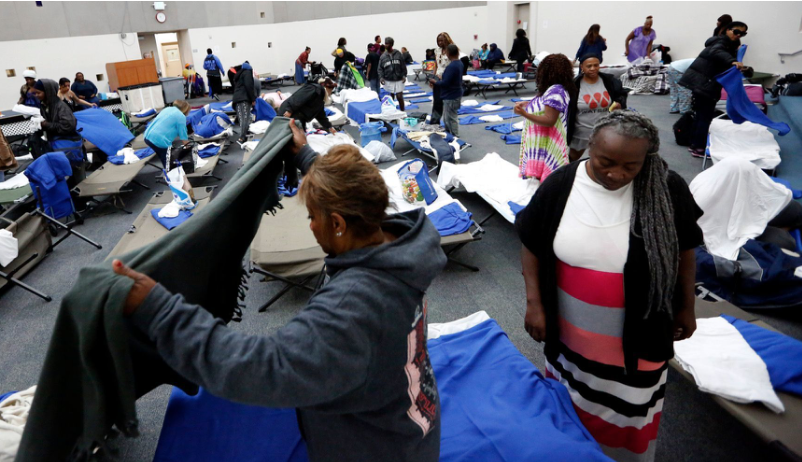CommentsDEEGAN ON LA-“Everything we’re doing now represents, in my view, Band-Aids on a hemorrhage... we need 5,000 beds now. We need another 5,000 beds next month, and another 5,000 the next month.
Not apartments. Beds. That’s the level of emergency we have on our hands.” So said Estela Lopez, executive director of the Downtown Industrial Business Improvement District.
She was responding to Mayor Garcetti’s newest plan to help the homeless, which he qualified by saying, “We need to recognize when the old way of doing things isn’t working,” and instead offered a new plan he called “a more nimble and strategic response to the needs of our neighborhoods.”
He was speaking about the failure of the city to ease homelessness, reacting to the harsh public response to the news that homelessness has increased 16% in Los Angeles.
He has an idea for cleaning up the encampments to an acceptable hygienic level, if not eradicating the homeless crisis altogether.
He is telling us he’s rolling out yet another plan to help the homeless, this one centered on what has suddenly become an alarming public health problem: limited sanitation for homeless people.
Garcetti talks, spends lots of money, but sees comparatively little results. He’s become like Sisyphus, the Greek King of Corinth who was condemned by Hades to eternally roll a boulder up a hill, only to watch it roll back down again.
Under the Mayor’s new sanitation model, crews will not wait for a complaint call, but will proactively visit encampments, in what the Mayor described as checking on trouble spots and getting to know people in each neighborhood. It will require a 50% increase in the number of sanitation teams, and about $10 million from the city’s budget.
There’s no inference in his plan that the newly cleaned up encampments would stay that way and be able to pass a board of health inspection ten days later.
This latest emerging crisis, referred to by the Mayor, has been described by LA County Health Officer Muntu Davis, M.D. as “public health risks that can arise from the persistence of trash (waste) illegally dumped in public spaces, rodent infestations, and lack of adequate facilities for personal hygiene and sanitation for the homeless encampments in the area.” While specifying Skid Row and Downtown Los Angeles, Dr. Muntu’s health warning applies citywide, wherever homeless encampments take root.
Like Garcetti’s previous homeless strategies there is a cost. He urged the City Council to “unlock the funding we need to put this plan into action as quickly as possible.”
During Garcetti’s two-year mayor term, over one billion dollars have been committed and spent on the homeless problem in Los Angeles so far. It comes down to this question: what about some beds and sanitation? As in, a tent with cots and hot running water.
Forget the dream of placing homeless in their own, often newly built, apartments. That plan, which reports say has already cost $619 million (or one-half-million-dollars per homeless apartment) seems inefficient, wasteful and moving too slowly.
During WW II, the Japanese Americans living in Los Angeles who were interred in the Manzanar War Relocation Center, were treated more comprehensively than we treat our homeless population. They got tarpaper barracks, cots, bathrooms, kitchens and showers. Do the homeless have to become belligerents to get the bare minimum of a bed and access to hygiene?
Far from just offering a bed, the homeless solution currently touted in City Hall hinges on “permanent supportive housing,” a model that espouses housing the homeless in their own private apartments first, and then backing them into supportive social services and eventual employment. The idea is to move the homeless through this cycle from the street to self-sufficiency and toward becoming a productive member of society.
For his part, the Mayor is facing a possibly unconquerable problem, relying on a “Plan A” solution that puts everyone who is homeless into an apartment. However, his best intentions, authentic compassion, and lots of money have not solved the crisis.
He should scale down his ambitions to a “Plan B” -- for which Estela Lopez argues -- that focuses on the simplicity of “a bed not an apartment,” some hot water and a tent, located in a supervised, safe area. This is worth looking at and could become the Mayor’s “Hail Mary” which would have people saying, “Hail Garcetti.”
(Tim Deegan is a civic activist whose DEEGAN ON LA weekly column about city planning, new urbanism, the environment, and the homeless appear in CityWatch. Tim can be reached at [email protected].) Edited for CityWatch by Linda Abrams.
















